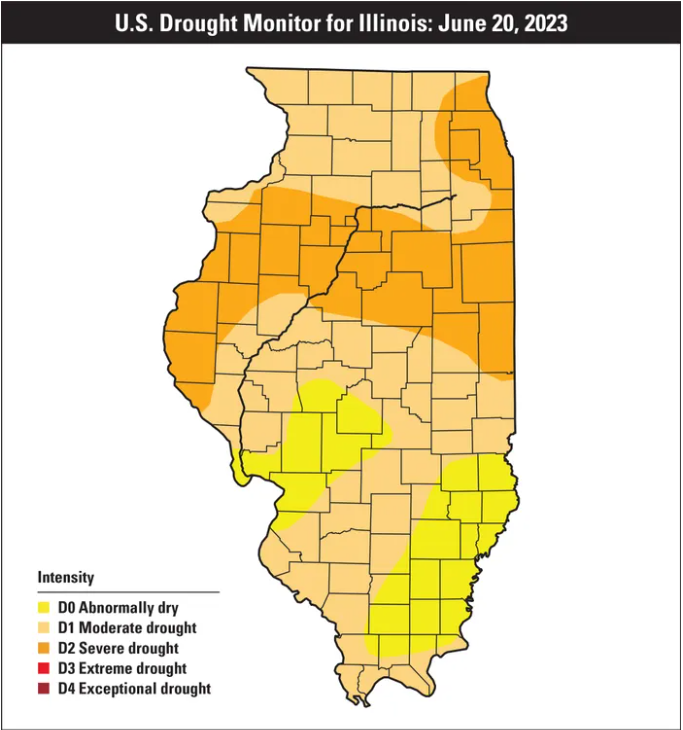Illinois is experiencing one of its worst spring droughts, comparable to the arid conditions of 1988, and this is raising concerns over the state’s corn and soybean yields for the 2023 growing season. The drought, which encompasses the entire state with levels ranging from “abnormally dry” to “severe drought”, has caused stress to the corn crops, particularly at the critical 12-leaf stage when water and nutrient intake escalate. While corn yield is likely to have already been affected, soybean yields remain uncertain as they are more dependent on weather patterns in late July to August. Despite the grim outlook, there is a silver lining in that growers today have access to advanced risk management tools, crop insurance, and drought-resistant seed genetics, which were not available in 1988. However, if the drought persists, farmers will need to be vigilant for spider mite pressure in soybeans, which can cause additional damage to the crops.
IL Drought Conditions Persist
June 29, 2023
